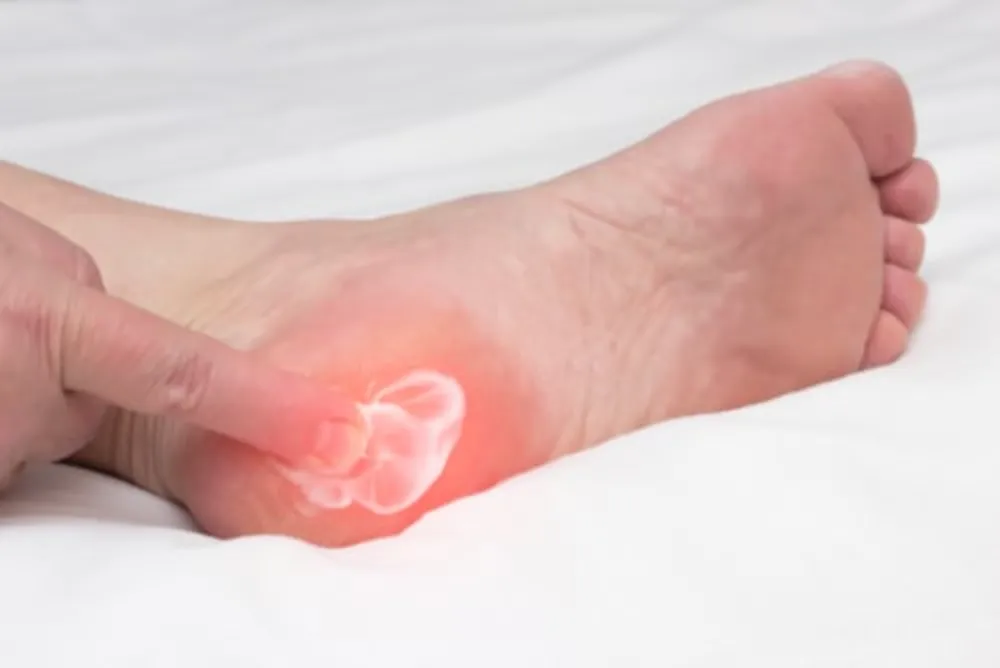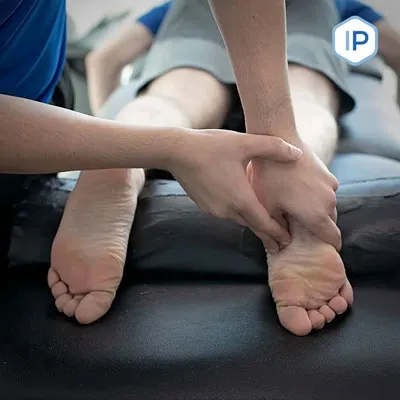Why do I get Plantar Fasciitis?
Plantar Fasciitis is a condition that affects the bottom of the foot and heel. Commonly, people suffering with it will report pain on the heel when walking. It’s usually worse after being stationary for long periods of time (getting up from a long sit down or first thing in the morning).
Plantar Fascia is a thick band of connective tissue that runs along the bottom of your foot. This band gradually becomes more and more irritated causing pain and often swelling. Understanding what causes plantar fasciitis helps us understand how best to treat it.
Plantar Fasciitis is thought to occur in about 10% of the general population, with 83% of these patients being active working adults between the ages of 25 and 65 years old. It may present on both feet in a third of the cases.
3 Factors That Contribute to Plantar Fasciitis
Poor Ankle Range of Motion and Flat Feet
Several studies have taken place looking at foot range of motion and flat feet in relation to plantar fasciitis. In 2018 (1), a study took place looking at plantar fascia thickness in relation to limited ankle dorsiflexion (How much your ankle bends towards you) and being flat footed. The study found that people with flat feet and reduced ankle range of motion had thicker plantar fascia and were at increased risk of plantar fasciitis.
Reduced range of motion or muscle tightness is very common in the people we see with plantar fasciitis. If you find that your feet and ankles are stiff, stretching your feet and calves can really help settle this down.
Increased Levels of Activity
Over your life your plantar fascia has been accustomed to certain levels of load or stress. If we increase our activity levels very quickly, it will take the plantar fascia a bit longer to acclimatise to this level of activity. We commonly see this in those who have caught the runner’s bug, have increased their time on their feet or have seen a big reduction in their downtime.
From a study completed on runners (2), they found that 15% of all runners experienced plantar fasciitis at some point in their lives. This is more common in runners who are preparing for longer distance events and start to increase their mileage very quickly.
Weight Gain
A study completed in 2021 (3) evaluated the factors which may contribute to plantar fasciitis, the article found that increased body mass and body mass index increased the possibility of plantar fasciitis. As discussed above, sudden weight gain can stress the plantar fascia causing it to become irritated. By modifying certain lifestyle factors we can mitigate the risk of acquiring plantar fasciitis.
What Can You Do?
Plantar fasciitis is what we call a multifactorial condition, no one thing will cause it. It is likely a combination of several factors that compound. As discussed in the introduction, the plantar fascia has been irritated and needs to be settled down. That’s where we come in.
3 things you can do to help ease the pain are:
In the following videos, Tom has put together 3 quick exercises that can help relieve your pain.
If you still feel that you aren’t making headway with your plantar fasciitis, please get in touch with our expert team. We’ve helped manage plantar fasciitis in a wide range of the population. From elite athletes to grandparents wanting to be able to walk around the house with no pain. Your pain matters to us and we want to help make it go away.
Want to speak to one of our team or want to book in… 0113 286 0333.
References:
- Park SY, Bang HS, Park DJ. Potential for foot dysfunction and plantar fasciitis according to the shape of the foot arch in young adults. J Exerc Rehabil. 2018 Jun 30;14(3):497-502. doi: 10.12965/jer.1836172.086. PMID: 30018939; PMCID: PMC6028224.
- Marlene DeMaio, MC, USNR, Russell Paine, RPT, Robert E Mangine, MEd, PT, ATC, and David Drez, Jr, MD, 1993, Plantar Fasciitis doi.org/10.3928/0147-7447-19931001-13
- Hamstra-Wright KL, Huxel Bliven KC, Bay RC, Aydemir B. Risk Factors for Plantar Fasciitis in Physically Active Individuals: A Systematic Review and Meta-analysis. Sports Health. 2021;13(3):296-303. doi:10.1177/1941738120970976


